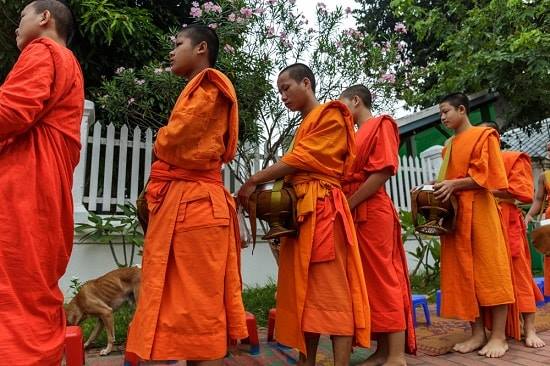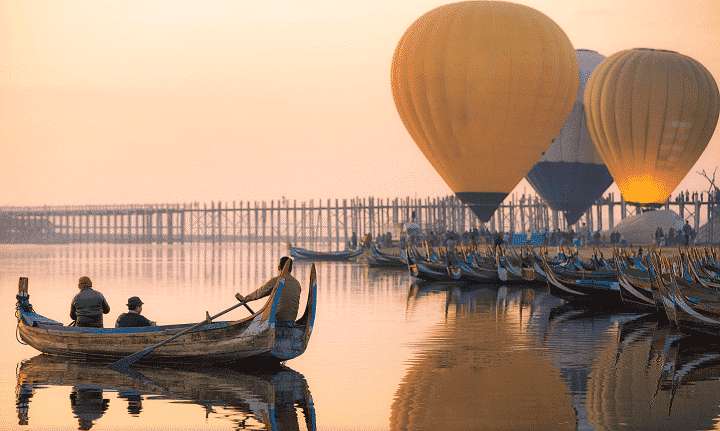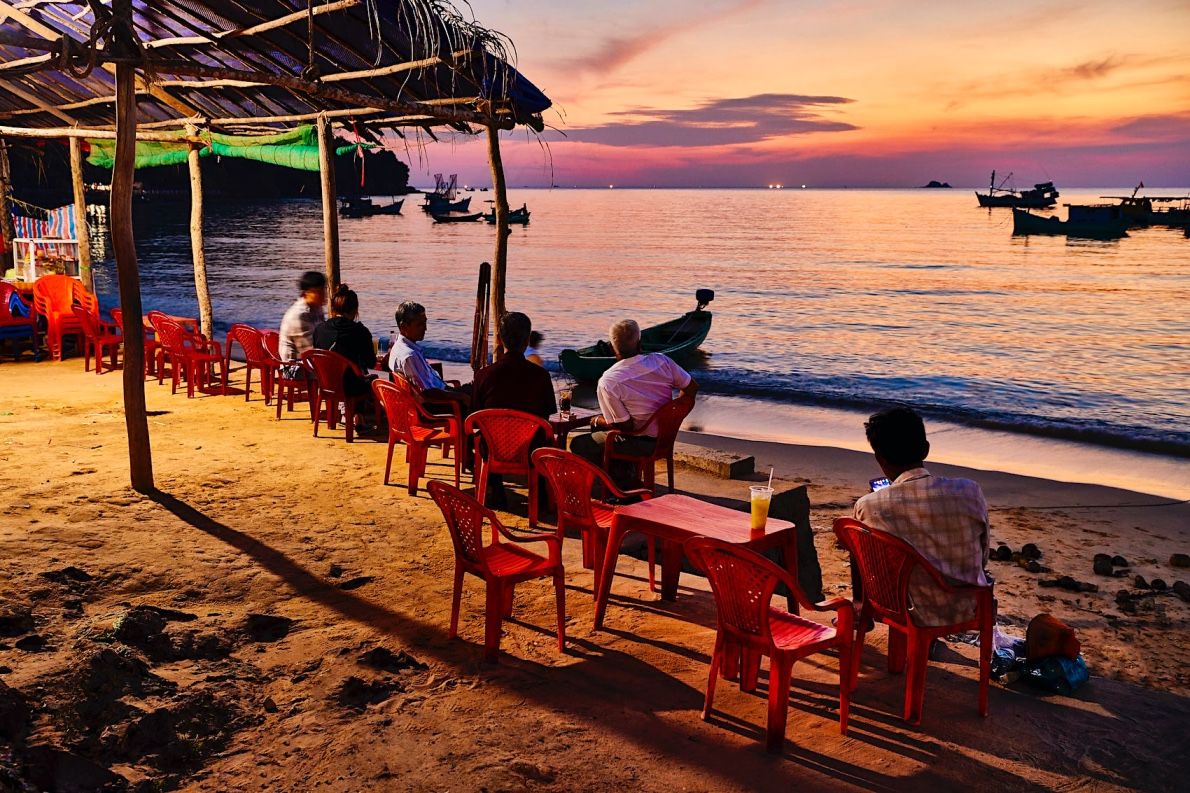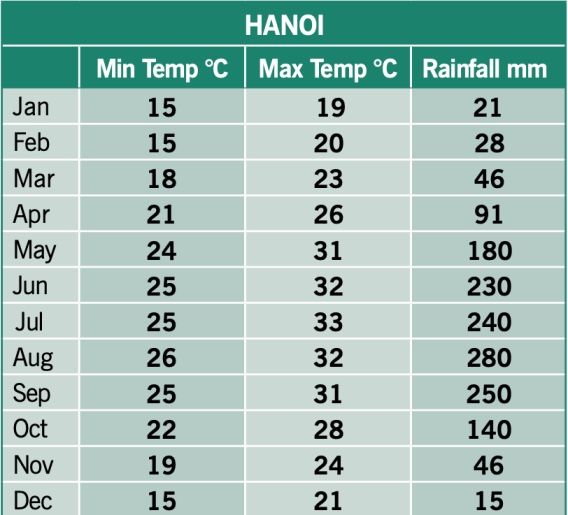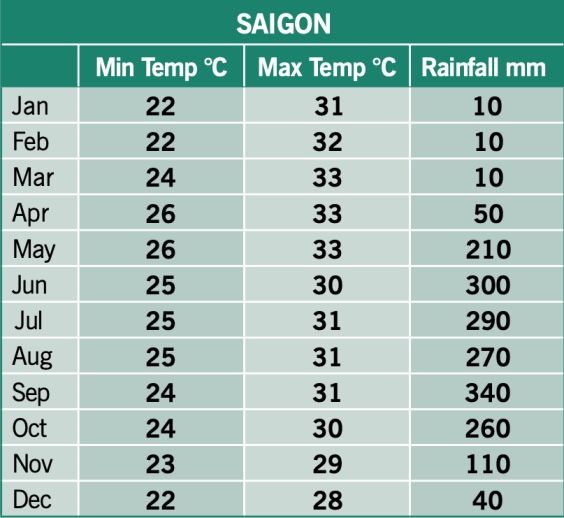BEST TIME TO VISIT VIETNAM
Vietnam beckons in any season, but picking the optimum Best Time To Visit Vietnam comes down to what you crave from a trip most: optimum beach weather? Cultural festivals? Fewer tourist crowds? A combination of all three? If you’re visiting Hanoi, in the north of Vietnam, the capital city experiences cold and dry winters and hot and humid summers. Spring and autumn are the most ideal times to visit with warmer temperatures and lower humidity.
Tropical Saigon is usually warm all year round and dry during the winter and spring months. Popular times to visit are October to December. Saigon’s rainy season falls in the summer months, but these rain spells often clear quickly.
Explore Vietnam Your Way → Book a packages tours to see the country your way: a vibrant city, rural villages and hilltribes, and picture-perfect beaches. Explore all of its corners on a Best Deal Vietnam Tours & Trips
High season: July & August → Best time to visit Vietnam for beach lovers
July and August are the busiest months to visit Vietnam, with prices increasing by up to 50% by the coast; book hotels well in advance. The whole country, except the far north, is hot and humid, punctuated by spectacular summer monsoon downpours. The climate of Vietnam varies considerably from region to region. Although the entire country lies in the tropics and subtropics, local conditions vary from frosty winters in the far northern hills to year-round, subequatorial warmth in the Mekong Delta.
Shoulder season: December – March, Best time for visiting Hanoi and HCMC
Winter in Vietnam tends to be drier than the summer months, but also colder. Expect chilly conditions in the north including Hanoi, but in the far south, clear skies and sunshine are the norm. If big cities are your thing, shoulder season is a pleasant time to visit both Hanoi and Ho Chi Minh City, with reliable weather and good temperatures. Although, during the Tet festival (late January or early February), the whole country is on the move and hotel prices rise.
Low season: April-June and September-November: Best time to go for exploring the whole Vietnam
Low season in Vietnam falls on the transition period from winter to summer and summer to winter, offering unsettled weather that can provide glorious days of sunshine, but also days of rain. It’s a great time to visit for those who want to avoid tourist crowds, or those looking to tour the whole country (with weather not notably awful anywhere).
This is also a good time to tour Halong Bay, with weather relatively reliable in this region during these months, particularly October and November.
Here’s a monthly guide to what you can expect when visiting Vietnam through the year in Vietnam. All events are subject to change.
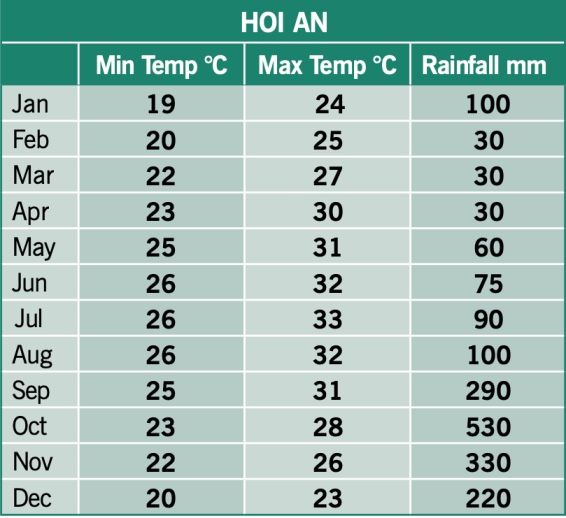
Vietnam Weather in January →
When it comes to weather and if you’re deciding to visit Vietnam in the month of January, it’s a tough call, as Vietnam’s climate is so diverse. Think frosts and occasional snow in the mountains of the far north, and temperatures soaring to 40°C in the south during the dry season.
January and winter temperatures can be bitterly cold in the far north, with snow possible. The further south you go, the milder the weather. Providing a dose of winter cheer, the Dalat Flower Festival, held early in the month, is always a wonderful occasion with huge elaborate displays, music, fashion shows and a wine festival.
Weather in Vietnam in February →
North of Danang, chilly ‘Chinese winds’ usually mean grey, overcast conditions. Conversely, sunny hot days are the norm in the southern provinces. February also welcomes Tet, Vietnamese New Year. Travel is difficult at this time, as transport is booked up and many businesses close. Tet can also sometimes fall in late January. So, make sure to book well in a head f time, hotels, tours and cruises can be fully booked if you just show up… books ahead!
Some travellers like to time a visit with Tet new year, the biggest festival in the calendar, which falls in late January or early February. It’s a nice idea in principle, but not in practice, as the whole country is on the move and prices rise dramatically. Transport is crammed in the runup and aftermath, the Reunification Express booked far in advance during festivities, flights rise up to 50%, and most shops and businesses are closed for the best part of a week.
Vietnam weather & when to Visit → March
Grey skies and cool temperatures can affect anywhere north of Hoi An, but towards the end of the month the thermometer starts to rise. Down south, the dry season is ending. Caffeine cravers should visit highlands during March, as Buon Ma Thuot plays host to an annual coffee festival. Growers, grinders, blenders and addicts rub shoulders in the city’s main park, and local entertainment is provided.
Visiting Vietnam in the month of March when the weather is dictated by two monsoons, meaning double trouble on the rain front. The winter monsoon comes from the northeast between October and March, bringing damp and chilly winters to all areas north of Nha Trang, and dry and warm temperatures to the south.
From Mid-March or May to October, the summer monsoon brings hot, humid weather to the whole country except for those areas sheltered by mountains. For the best balance, we’d vote for the months of March, May or October. For those sticking to the south, November to February is dry and a touch cooler. From July to November, violent and unpredictable typhoons hit central and northern Vietnam, which can dampen the spirits of even the most enthusiastic traveller.
Visit Vietnam In April→ Attractive season to travel
Month of April generally considered as an excellent time to visit Vietnam, as the winter rainy season should have subsided and there are some excellent festivals on offer. Enjoy a smorgasbord of art, theatre, music, circus and dance performances at Hue Festival, held every two years in the city’s Citadel, or observe the sombre traditions of Thanh Minh (Holiday of the Dead), where ancestors are honoured and offerings placed on graves and spiritual sights throughout the country.
Planning a visit to Vietnam in Month of May
A fine time to tour the centre and north of Vietnam, with a good chance of clear skies and warm days. Sea temperatures are warming up nicely and it’s a pretty quiet month for tourism. Things do get notably louder, however, during Phong Sinh, which marks Buddha’s Birth, Enlightenment and Death with lively street processions, as well as lanterns being hung on pagodas. Complexes including Chua Bai Dinh near Ninh Binh and HCMC’s Jade Emperor Pagoda host lavish celebrations.
Visiting Vietnam in Month of June
A great time to tour Vietnam as it’s just before the peak domestic season. Humidity can be punishing at this time of year, so plan to spend some time by the coast. Celebrated biannually in early June, Nha Trang Sea Festival whips the city into a frenzy with a street festival, photography exhibitions, sports events, embroidery displays and kite-flying competitions.

Is July a good time to visit Vietnam?
July marks the beginning of high season, expect accommodation prices to rise and crowds to thicken (especially in coastal hotspots such as Nha Trang & Danang Hoi An). Along with the balmy coastal weather, the Danang International Fireworks Festival adds another reason to visit this month, with fantastic pyrotechnic shows taking place in Danang during five weekends in late June and early July.
Is August a good time to visit Vietnam?
The peak month for tourism with domestic and international tourists. Book flights, tours and accommodation well ahead. Prices rise and beaches are busy. Weather-wise it’s hot, hot, hot. Cultural festivals this month include Trung Nguyen, an ancient Vietnamese tradition where huge spreads of food are left out for ‘wandering spirits’ and Children’s (or Mid-Autumn) Festival, a big event in Hoi An and Hanoi, when citizens (especially children) celebrate the full moon by eating moon cakes and undertaking colourful dance processions.
Visit Vietnam in Month of September
September marks the start of Vietnam’s second annual low season, and is an excellent time to tour the whole Vietnam from top to toe. The coastal resorts are less crowded and there are fewer people on the move. Temperatures and humidity levels drop too. Big parades and events are held across Vietnam on 2 September for Vietnam National Day. Celebrations are particularly fervent in Hanoi, with a rally and fireworks at Ba Dinh Square (in front of Ho Chi Minh’s Mausoleum). Hanoi Pride also comes to town towards the end of the month, adding to the September festivities.
September is also considered as top season to visit Rice Terraces in Vietnam
Visit Vietnam in October
A good time to visit the far north, with a strong chance of clear skies and mild temperatures that are good for hiking. Winter winds and rain begin to affect the centre, but down south it’s often dry. Wherever you end up, you’ll likely be able to tuck into a moon cake or two as part of Trung Thu (Mid-Autumn Festival), which sees locals across the country eating the delicacies, filled with lotus seeds, watermelon seeds, peanuts, the yolks of duck eggs, raisins and other treats. The festival sometimes falls in September.
Visiting Vietnam in November
A fine time to visit HCMC, Mui Ne, the Mekong Delta and offshore islands such as Phu Quoc as sunny skies are the norm. However, in the centre and north it can be cool and rainy (though Hanoi is often dry and sunny). Another reason to head south is to witness the Khmer Oc Bom Boc Festival, which the Mekong Delta’s Khmer community celebrates with colourful boat races at Ba Dong Beach in Tra Vinh province and on the Soc Trang River. The festival sometimes falls in late October.
Visiting Vietnam in December
The month begins quietly, but from mid-December the popular tourist resorts get increasingly busy. Book well ahead to secure a room over the Christmas break. The weather is steamy in the south, but can get chilly up north. Though not a national holiday, Christmas Day is celebrated throughout Vietnam, particularly by the sizable Catholic population. It’s a special time to be in places such as Phat Diem and Ho Chi Minh City, where thousands attend midnight Mass.
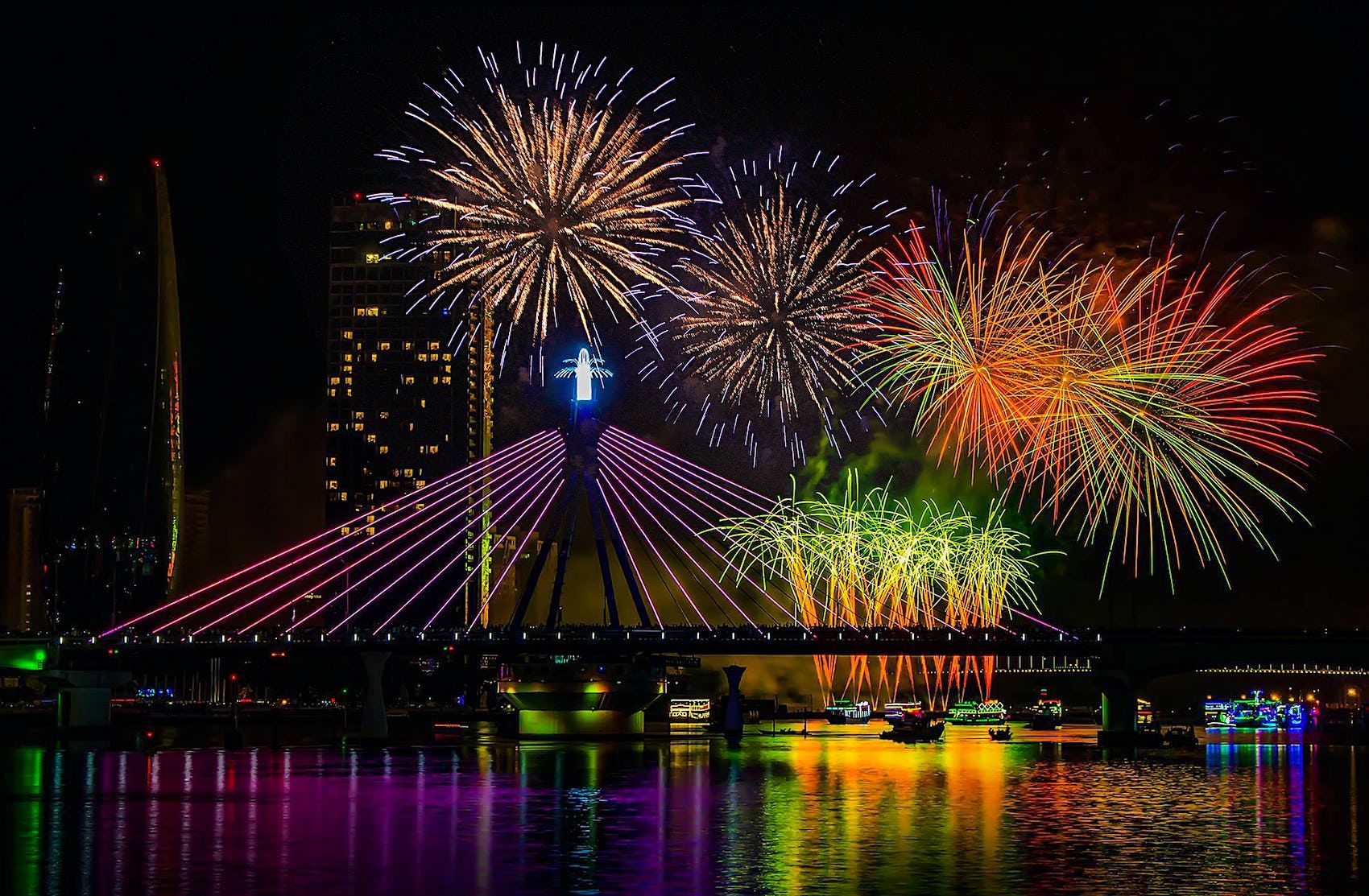
Weather in Vietnam : With a multitude of altitudes and latitudes there’s always somewhere that is pleasantly sunny and warm to travel. Temperatures are usually hot and humid, around the low 30°Cs (high 80°Fs), but if you head north and along the coast they cool down to comfortable temperatures towards January. Vietnam weather is determined by two monsoons; the winter monsoon comes from the northeast between October and March bringing wet chilly winters to all areas north of Nha Trang, but dry and warm temperatures to the south. From April or May to October, the southwestern monsoon brings warm, humid weather and buckets of rain to the whole country except for those areas sheltered by mountains.
Copyright 2013-2017 Vietnamese Private Tours Ltd With Vietnam Luxury Travel



